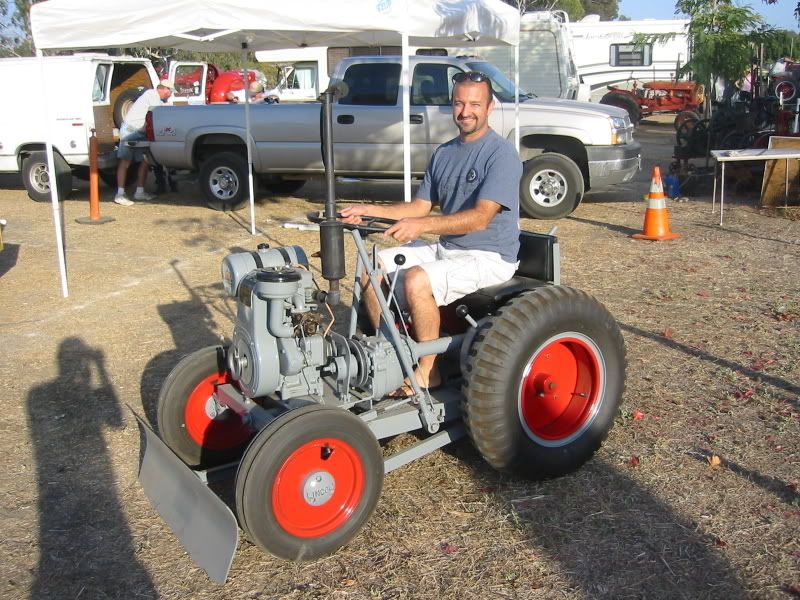Hello,
My name is Carlos. My son Anthony was kind enough to post a picture of me driving this neat little tractor that a friend of ours brought to the Vista, CA tractor show.
This is what I found out about this machine: Lincoln was built by National Steel and Ship building (NASSCO) in San Diego, CA right after WWII when they lost the ship building contracts after the war. Due to some legal issue (unknown to me at this moment) they did not manufacture the Lincoln tractor under the NASSCO name but rather by the National Ironworks company name.
They started to manufacture tractors and stoves among other things to keep the company going and minimize layoffs. They copied the design for this tractor from another company back east (I do not know who at this moment but I was told that they did use the Salsbury engine) and hence why JKWidener noticed a difference in the engines (very keen eye). My understanding is that both of these tractors are almost completely identical. I want to research this some more.
The Lincoln had a Wisconsin AEH or AEN motor (the grey one in the picture) depending on what military surplus items they had in stock or could acquire. The paint on these motors was originally military green. The transmission in this grey prototype is a 1937 Chevy 3 speed 1 reverse transmission and the drive shaft has "Lincoln Patent Pending" stamped on it. It also has a direct link steering mechanism, very hard to steer.
The Crosley 3/1 transmission is what later went into production and the steering was a rack and pinion design (much better).
Another interesting bit of historical information that I was told is that the rear end on these tractors were left over waterproof hatch closing mechanical drive assemblies from the ships they built during WWII.
I find this stuff fascinating.
Thank you both for your replies.
I hope this helps preserve a little more knowledge of our history and where, why, and how some of these machines were made.
God Bless.

